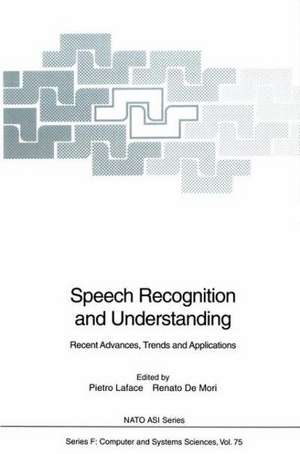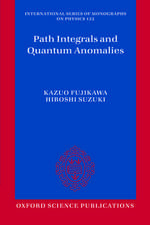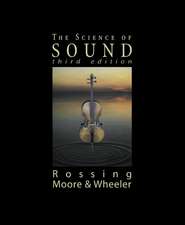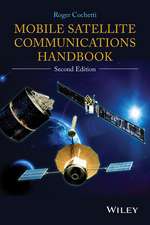Speech Recognition and Understanding: Recent Advances, Trends and Applications: NATO ASI Subseries F:, cartea 75
Editat de Pietro Laface, Renato Demorien Limba Engleză Paperback – 23 dec 2011
Din seria NATO ASI Subseries F:
- 20%
 Preț: 650.27 lei
Preț: 650.27 lei - 20%
 Preț: 668.55 lei
Preț: 668.55 lei - 20%
 Preț: 992.44 lei
Preț: 992.44 lei - 18%
 Preț: 1239.19 lei
Preț: 1239.19 lei - 20%
 Preț: 1922.81 lei
Preț: 1922.81 lei - 20%
 Preț: 654.37 lei
Preț: 654.37 lei - 18%
 Preț: 1234.00 lei
Preț: 1234.00 lei - 20%
 Preț: 709.78 lei
Preț: 709.78 lei - 20%
 Preț: 656.03 lei
Preț: 656.03 lei - 18%
 Preț: 1854.94 lei
Preț: 1854.94 lei - 20%
 Preț: 374.97 lei
Preț: 374.97 lei - 20%
 Preț: 991.94 lei
Preț: 991.94 lei - 20%
 Preț: 671.02 lei
Preț: 671.02 lei - 20%
 Preț: 1925.96 lei
Preț: 1925.96 lei - 20%
 Preț: 994.73 lei
Preț: 994.73 lei -
 Preț: 389.49 lei
Preț: 389.49 lei - 20%
 Preț: 657.99 lei
Preț: 657.99 lei - 20%
 Preț: 655.20 lei
Preț: 655.20 lei - 18%
 Preț: 1225.31 lei
Preț: 1225.31 lei - 18%
 Preț: 952.09 lei
Preț: 952.09 lei - 20%
 Preț: 332.06 lei
Preț: 332.06 lei - 20%
 Preț: 1284.47 lei
Preț: 1284.47 lei - 20%
 Preț: 644.81 lei
Preț: 644.81 lei -
 Preț: 395.85 lei
Preț: 395.85 lei - 18%
 Preț: 1221.07 lei
Preț: 1221.07 lei - 15%
 Preț: 643.34 lei
Preț: 643.34 lei - 20%
 Preț: 645.47 lei
Preț: 645.47 lei - 20%
 Preț: 1282.98 lei
Preț: 1282.98 lei - 20%
 Preț: 656.36 lei
Preț: 656.36 lei - 20%
 Preț: 1283.31 lei
Preț: 1283.31 lei - 20%
 Preț: 1924.15 lei
Preț: 1924.15 lei - 20%
 Preț: 362.24 lei
Preț: 362.24 lei
Preț: 663.45 lei
Preț vechi: 829.32 lei
-20% Nou
Puncte Express: 995
Preț estimativ în valută:
126.97€ • 132.07$ • 104.82£
126.97€ • 132.07$ • 104.82£
Carte tipărită la comandă
Livrare economică 15-29 aprilie
Preluare comenzi: 021 569.72.76
Specificații
ISBN-13: 9783642766282
ISBN-10: 3642766285
Pagini: 580
Ilustrații: XI, 559 p.
Dimensiuni: 170 x 242 x 30 mm
Greutate: 0.91 kg
Ediția:Softcover reprint of the original 1st ed. 1992
Editura: Springer Berlin, Heidelberg
Colecția Springer
Seria NATO ASI Subseries F:
Locul publicării:Berlin, Heidelberg, Germany
ISBN-10: 3642766285
Pagini: 580
Ilustrații: XI, 559 p.
Dimensiuni: 170 x 242 x 30 mm
Greutate: 0.91 kg
Ediția:Softcover reprint of the original 1st ed. 1992
Editura: Springer Berlin, Heidelberg
Colecția Springer
Seria NATO ASI Subseries F:
Locul publicării:Berlin, Heidelberg, Germany
Public țintă
ResearchCuprins
1 Recent Results on Hidden Markov Models.- Invited papers.- Hidden Markov Models for Speech Recognition — Strengths and Limitations.- Hidden Markov Models and Speaker Adaptation.- A 20,000 word Automatic Speech Recognizer. Adaptation to French of the US TANGORA System.- Automatic Adjustments of the Markov Models Topology for Speech Recognition Applications over the Telephone.- Phonetic Structure Inference of Phonemic HMM.- Phonetic Units and Phonotactical Structure Inference by Ergodic Hidden Markov Models.- Clustering of Gaussian Densities in Hidden Markov Models.- Developments in High-Performance Connected Digit Recognition.- Robust Speaker-Independent Hidden Markov Model Based Word Spotter.- Robust Speech Recognition in Noisy and Reverberant Environments.- An ISDN Speech Server based on Speaker Independent Continuous Hidden Markov Models.- RAMSES: A Spanish Demisyllable Based Continuous Speech Recognition System.- Speaker Independent, 1000 Words Speech Recognition in Spanish.- Continuously Variable Transition Probability HMM for Speech Recognition.- 2 Continuous Speech Recognition Systems.- Invited papers.- Context-Dependent Phonetic Hidden Markov Models for Speaker-Independent Continuous Speech Recognition (Abstract).- Speaker-Independent Continuous Speech Recognition Using Continuous Density Hidden Markov Models.- Contributed papers.- A Fast Lexical Selection Strategy for Large Vocabulary Continuous Speech Recognition.- Performance of a Speaker-Independent Continuous Speech Recognizer.- Automatic Transformation of Speech Databases for Continuous Speech Recognition.- Iterative Optimization of the Data Driven Analysis in Continuous Speech.- Syllable-based Stochastic Models for Continuous Speech Recognition.- Word Hypothesization in Continuous Speech Recognition.-Phone Recognition Using High Order Phonotactic Constraints.- An Efficient Structure for Continuous Speech Recognition.- Search Organization for Large Vocabulary Continuous Speech Recognition.- 3 Connectionist Models of Speech.- Invited papers.- Neural Networks or Hidden Markov Models for Automatic Speech Recognition: Is there a Choice?.- Neural Networks for Continuous Speech Recognition.- Connectionist Large Vocabulary Speech Recognition.- The Cortical Column as a Model for Speech Recognition: Principles and First Experiments.- Contributed papers.- Radial Basis Functions for Speech Recognition.- Phonetic Features Extraction Using Time-Delay Neural Networks.- Improved Broad Phonetic Classification and Segmentation with an Auditory Model.- Automatic Learning of a Production Rule System for Acoustic-Phonetic Decoding.- 4 Stochastic Models for Language and Dialogue.- Invited papers.- Stochastic Grammars and Pattern Recognition.- Basic Methods of Probabilistic Context Free Grammars.- A Probabilistic Approach to Person-Robot Dialogue.- Contributed papers.- Experimenting Text Creation by Natural-Language, Large-Vocabulary Speech Recognition.- DUALGRAM: An Efficient Method for Representing Limited-Domain Language Models.- Strategies for Speech Recognition and Understanding Using Layered Protocols.- 5 Understanding and Dialogue Systems.- Invited papers.- TINA: A Probabilistic Syntactic Parser for Speech Understanding Systems.- The Voyager Speech Understanding System: A Progress Report.- The Interaction of Word Recognition and Linguistic Processing in Speech Understanding.- Linguistic Processing in a Speech Understanding System.- Contributed papers.- Linguistic Tools for Speech Recognition and Understanding.- Evidential Reasoning and the Combination of Knowledge and StatisticalTechniques in Syllable Based Speech Recognition.- 6 Speech Analysis, Coding and Segmentation.- Contributed papers.- Data Base Management for Use with Acoustic-Phonetic Speech Data Bases.- BPF Outputs Compared with Formant Frequencies and LPCs for the Recognition of Vowels.- A Codification of Error Signal by Splines Functions.- Specific Distance for Feature Selection in Speech Recognition.- Multiple Template Modeling of Sublexical Units.- Learning Structural Models of Sublexical Units.- On the Use of Negative Samples in the MGGI Methodology and its Application for Difficult Vocabulary Recognition Tasks.- A New Method for Dynamic Time Alignment of Speech Waveforms.- A New Technique for Automatic Segmentation of Continuous Speech.- Segmentation of Speech based upon a Linear Model of the Effects of Coarticulation 549 P.J. D.















